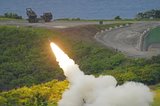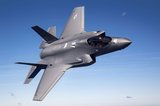Babcock to provide high-frequency communications to Australia
Using Babcock's technology, members of the Armed Forces will be able to communicate more effectively and quickly in notoriously challenging terrain, such as built-up cities, mountains and jungles. (Image: Babcock International)
Babcock International has been selected by the Australian government to upgrade and sustain the Defence High-Frequency Communication System over the next ten years, with four potential extensions of two years.
Babcock Australasia will collaborate with Lockheed Martin Australia and the Australian Defence Force to deliver an upgraded system that provides effective long-range communications capability.
The collaboration between the companies was announced in May 2020 in response to an RfT issued under Joint Project 9101 for Enhanced Defence High-Frequency Communications System.
The result is a robust sovereign solution that provides the ADF with a performance edge across its operations for land and sea assets.
Babcock brings its experience providing defence HF communication systems for the UK and New Zealand.
The New Zealand MoD awarded Babcock a $16.7 million contract to overhaul the military’s HF radio network in March 2020.
David Lockwood, chief executive, Babock International, commented: ‘Fit for today and ready for tomorrow, our collaborative approach will deliver a secure, resilient and advanced high-frequency communications solution for the ADF.'
Babcock will now enter a period of commercial discussions and, pending a final Australian government decision, will achieve a formal contract award.
More from Defence Notes
-
![Taiwan approved for purchase of $11 billion in weapons from US]()
Taiwan approved for purchase of $11 billion in weapons from US
The US State Department’s approval of a multi-billion-dollar sale of weapons to Taiwan includes tactical mission networks equipment, uncrewed aerial systems, artillery rocket systems and self-propelled howitzers as well as anti-tank guided missiles.
-
![Ireland spells out $2.3 billion shopping list in five-year defence spending plan]()
Ireland spells out $2.3 billion shopping list in five-year defence spending plan
Ireland’s multi-annual investment in capital defence spending is set to rise from €300m in 2026 to €360m in 2029–2030 with major upgrades across land, air, maritime and cyber domains.
-
![Canada to deepen integration of multi-domain capabilities to strengthen its defences]()
Canada to deepen integration of multi-domain capabilities to strengthen its defences
The Canadian Department of National Defence has created new organisations to manage the procurement and integration of all-domain solutions and allocated US$258.33 million to strengthen production capacities.
-
![US National Security Strategy prioritises advanced military capabilities and national industry]()
US National Security Strategy prioritises advanced military capabilities and national industry
The 2025 NSS has emphasised investment in the US nuclear and air defence inventory and national industry, but it leaves multiple unanswered questions on how the White House will implement this approach.
-
![Canada set to look away from its neighbour and across the Atlantic for partners]()
Canada set to look away from its neighbour and across the Atlantic for partners
While non-EU UK struggles to join the Security Action for Europe initiative, which provides loans for defence programmes, Canada has become the first country outside Europe to get access – and did so for a nominal fee.
-
![NATO experiments with solutions to integrate networks, AI and uncrewed systems]()
NATO experiments with solutions to integrate networks, AI and uncrewed systems
During the latest edition of the NATO DiBaX, the alliance tested multiple capabilities to inform requirements for future efforts.


























